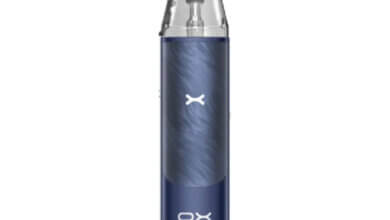
When your Dyson V8 no longer holds a charge or shuts down too quickly, the issue often lies with the battery—not the vacuum. A Dyson V8 battery replacement can restore runtime and avoid the expense of buying a new unit. This detailed guide explains when to replace the battery, how to install a new one, and how to choose a reliable Dyson V8 spare battery, including compatibility with the Dyson SV10 battery system.
Why Replace the Dyson V8 Battery?
Over time, lithium-ion batteries lose capacity through repeated charging. V8 batteries typically last between 2 and 4 years with regular use. Signs it’s time for a new battery include:
- The vacuum shuts off after only a few minutes of runtime.
- The battery light flashes red or won’t light up.
- Charging takes much longer than normal.
- The vacuum only runs when plugged in.
If the vacuum otherwise functions normally, replacing the battery is a smart fix. A Dyson V8 battery replacement costs far less than a new model.
What to Know Before You Buy
Model Compatibility
The original vacuum ships with a Dyson SV10 battery, which is the internal pack used in V8 models. Replacement batteries—whether OEM or high-grade third-party—must match SV10 specifications.
Buy Genuine or Quality Third-Party
- OEM Dyson units come with a warranty and reliable performance.
- Some third-party batteries offer higher capacity at lower cost and match OEM voltage and connectors. Check that they support SV10 models.
Safety and Features to Look For
- Overcharge protection and short-circuit prevention
- Thermal overload safeguards
- Capacity rating of 2800 mAh or more
- A clear warranty or return policy
Dust-Free Installation: Tools & Workspace
Tools You Need
- Phillips #1 and #2 screwdrivers
- Clean work surface
- Optional gloves
Workspace Prep
Turn off and unplug the vacuum. Remove external clog-sensitive parts like the wand or tools. Lay the vacuum on its side on a flat table or bench.
Replacing the Battery: Step-by-Step
- Remove the Bin and Wand
Press the red release lever at the top of the bin and pull it straight off. This creates easier access to the battery assembly. - Locate Screw Fasteners
Two screws hold the SV10 battery in place—one near the base of the wand handle and one beneath the battery. - Unscrew and Remove Battery
Use the Phillips screwdriver to remove both screws. Gently slide the old battery down and out. - Inspect Contacts
Wipe the battery contacts with a dry cloth. Clean dust or debris from the connector inside the vacuum. - Install the New Battery
Align the fresh battery pack with the internal guides. Slide it into place until it clicks. - Secure with Screws
Reinstall both screws and tighten firmly—but don’t overtighten so as not to crack the housing. - Reattach the Bin and Wand
Pop the bin and wand back into place until they click. - Charge the New Battery
Charge fully before first use. A full charge usually takes around 3.5 hours.
Testing After Battery Replacement
- Run vacuum in standard mode to confirm stable runtime.
- If the runtime still drops quickly, check the charger or power source.
- If the vacuum only runs while plugged in, your battery may be incompatible or faulty.
Care Tips for Long Battery Life
To keep your Dyson V8 spare battery running well:
- Let it cool before charging after extended use
- Store vacuum in a cool, dry spot
- Remove the battery if you don’t plan to use it for more than a month
- Don’t let the battery drain completely all the time—recharge when power gets low
- Avoid charging in extreme temperatures
These steps help extend battery longevity and maintain performance.
How Long Should the New Battery Last?
High-quality replacements typically last 3–5 years or 300–500 charge cycles. If you clean filters and maintain tool parts regularly, the battery wears more slowly.
Common Issues & Troubleshooting
Charging Light Won’t Illuminate
Check the outlet, charger, and cable. Dirty contacts or a faulty charger often cause this issue, not the battery.
Vacuum Doesn’t Run After Battery Swap
Check that the battery is fully charged. Re-seat it if needed. Verify you’ve installed the correct SV10-compatible pack.
Short Runtime Continues
Confirm the charger is delivering full voltage. If the runtime still drops fast, consider replacing the charger or contacting seller support.
Pros and Cons: OEM vs. Third-Party
| Option | Pros | Cons |
| Dyson SV10 Battery (OEM) | Official fit, warranty, and tested quality | Higher cost |
| Certified Third-Party Battery | Lower price, high capacity options | Quality varies; ensure seller credibility |
When a New Vacuum Might Be Better
A battery swap is usually enough if the motor, hoses, or cyclones still work well. A full vacuum replacement makes sense if:
- Motor loses suction or gets loud
- The filter or cyclone assembly wears out
- Plastic parts crack or don’t latch securely
- You’ve used the vacuum heavily for 5+ years
Final Summary
Replacing a worn-out SV10 pack with a Dyson V8 battery replacement is often the most cost-effective way to restore your vacuum. Whether you choose an OEM battery or a trusted third-party option, follow the installation steps and care tips above for best results. Use the cleaning and maintenance checklist to avoid unnecessary replacements and make the new battery live longer.
A working V8 means better cleaning, longer runtime, and more value from your investment. A new battery can breathe new life into your Dyson V8 and avoid throwing out a still-functional machine.
With this guide, you can confidently perform a Dyson V8 battery replacement, care for the battery properly, and decide when a vacuum swap makes sense.



